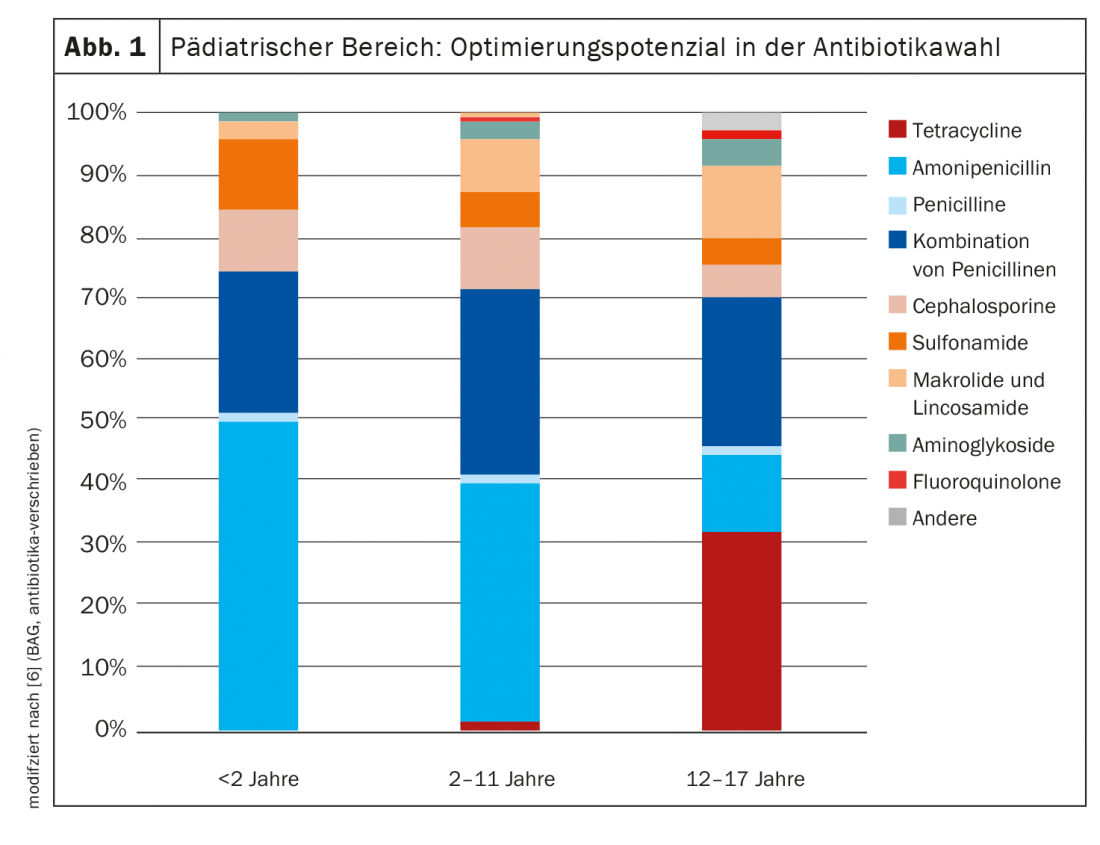The emergence of resistant bacteria is a worldwide problem. Targeted use of antibiotics is an important approach to reducing antibiotic resistance. The “Swiss Antibiotic Resistance Report 2022” shows that corresponding measures are gradually having an effect in Switzerland. Overall, there have been signs of stabilization in resistance rates in recent years.
In order to ensure the effectiveness of antibiotics in the long term and to curb the development of resistance, the Federal Council launched the national antibiotic resistance strategy (StAR) in 2015 [1,2]. The efforts appear to be bearing fruit. Monitoring of antibiotic consumption and antibiotic resistance confirms a positive trend in Switzerland. For example, the recently published “Swiss Antibiotic Resistance Report” by the Federal Office of Public Health (FOPH) and the Federal Food Safety and Veterinary Office (FSVO) shows a decline in important areas [1,2].
Fewer infections – reduction in antibiotic consumption
In human medicine, total antibiotic consumption decreased by 19% from 2019 to 2021 [1]. Improved hygiene, such as increased hand washing, disinfection, and wearing of a mouth guard, as well as a reduction in contacts during the Covid-19 pandemic, likely played an important role in this regard, as they generally led to a decrease in infection rates. Prior to the Covid-19 pandemic, antibiotic use in humans in Switzerland was roughly stable from 2010-2019, but significant reductions in the use of critical “watch” antibiotics were achieved.
Tracking of the local resistance situation
The problem of antibiotic resistance of bacterial pathogens affects both inpatient and outpatient care settings, with approximately 80% of antibiotics in human medicine being prescribed in the outpatient setting [3,4]. In a European comparison, Switzerland continues to be one of the countries with the lowest consumption, although there are pronounced regional differences: In the French- and Italian-speaking regions, antibiotic consumption per inhabitant is significantly higher on average than in German-speaking Switzerland. Most antibiotic use in 2021 was for urinary tract infections (40%), followed by upper respiratory tract diseases (23%). The Swiss Society of Infectious Diseases (SSI, ssi.guidelines.ch) regularly develops and publishes guidelines that allow physicians to optimize antibiotic use according to the most current knowledge [5]. Users have the opportunity to make suggestions or ask questions via a comment function and thus further improve the guidelines. The INFECT application of the Swiss Center for Antibiotic Resistance ANRESIS displays the current resistance data clearly and intuitively. This supports, among other things, the use of antibiotics tailored to the local resistance situation. This also includes SSI prescribing guidelines. The INFECT app is available at infect.info and is available for Android and iOS. General information and current trends can also be found at anresis.ch.
Too frequent use of macrolides
Analyses of the prescribing practices of pediatric patients show that there is still potential for optimization in antibiotic selection in this area: About 80% of antibiotic prescriptions in children are for respiratory tract infections. The recommended (simple) penicillins or aminopenicillins are not always used for this purpose. Macrolides, which have a problematic profile for resistance selection, are probably overused for the treatment of respiratory tract infections (Fig. 1) [6]. The Bern Institute of Family Medicine (BIHAM) has produced evidence-based physician information and a decision aid to assist family physicians and pediatricians in participatory decision making with parents regarding antibiotic administration for the child by highlighting advantages and disadvantages of therapy with and without antibiotics for one of the most common infectious diseases in pediatrics: biham.unibe.ch/decision-aid.
Literature:
- The measures of the antibiotic resistance strategy are having an effect – antibiotic use is falling”, FOPH, 10.11.2022.
- Swiss Antibiotic Resistance Report, www.star.admin.ch/star/de/home/sarr/sarr.html
- Weber R, Chmiel C: Infectiology – Therapy Recommendations, Updated on: 12/2021, www.medix.ch, (last accessed 11/11/2022).
- FOPH: How are antibiotics prescribed in Switzerland today? www.bag.admin.ch/bag/de/home/krankheiten/infektionskrankheiten-bekaempfe…, (last accessed 11/11/2022)
- Swiss Society of Infectious Diseases, https://ssi.guidelines.ch, (last accessed 11 Nov 2022).
- BAG, www.bag.admin.ch/antibiotikaresistenzen-hilfsmittel, as of January 2022
HAUSARZT PRAXIS 2022; 17(11): 21












